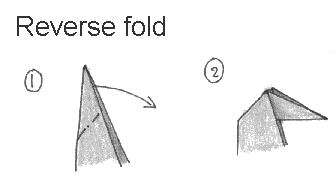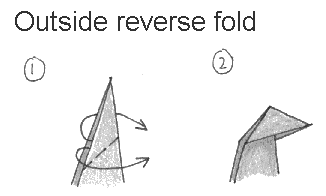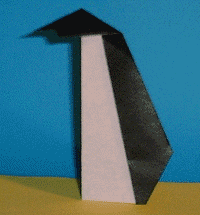





Part 3 Reverse folds
A reverse fold is where a tip is folded so that ends of the paper lie in between different layers, so that two or more layers are folded along a single crease. Now this sounds rather more complicated than it actually is!There are two sorts of reverse fold. The most common is an inside reverse fold. Some paperfolders call this a hood-fold.

 |
There are many uses for an inside reverse fold. To practice,
here is a simple duck model. Three different sorts of reverse fold
are used, one to make the tail, one to fold the chest and one to
form the beak. Click here for diagrams |

 |
This next model uses one outside reverse fold to form the head.
Notice that I have used a sheet of origami paper that is black on
one side and white on the other. This produces a two-tone model.
This use of origami paper makes models look very attractive. Some
paperfolding experts can design models such as tigers and zebras
where the stripes are a different colour to the rest of the
model. Click here for diagrams |